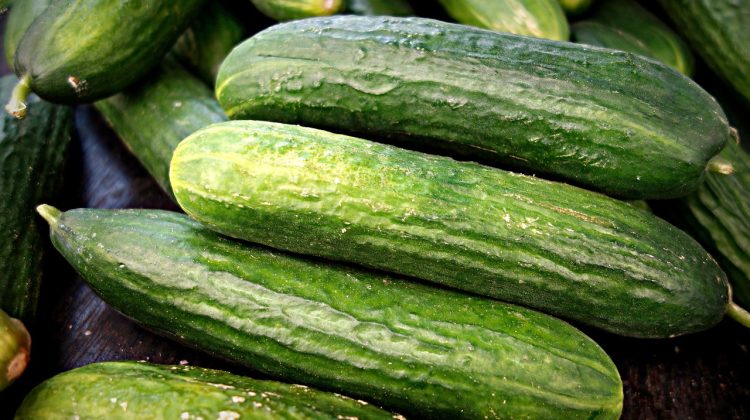
Cucumbers are a popular and versatile vegetable that can be grown in a variety of settings, including gardens, raised beds, and containers.
Not only are they easy to grow, but they also provide a bounty of crisp, refreshing cucumbers that can be used in salads, sandwiches, and pickles.
Whether you’re a seasoned gardener or a beginner, growing cucumbers is a great way to enjoy fresh produce right from your own backyard.
When it comes to growing cucumbers, there are a few key factors to keep in mind. First, cucumbers thrive in warm, sunny locations with well-draining soil.
Second, they require consistent moisture to prevent bitterness and promote healthy growth. And third, cucumbers can be grown from seeds or transplants, depending on your preference and experience level.
By following these basic guidelines and a few additional tips and tricks, you can grow a successful cucumber crop that will keep you well-stocked all season long.
In this article, we'll cover
1. Choosing the Right Cucumber Variety

When it comes to growing cucumbers, choosing the right variety is crucial. Not all cucumbers are created equal.
Some are better suited for slicing, while others are perfect for pickling. Here are a few things to keep in mind when selecting the right cucumber variety:
- Growing location: Consider your growing location when selecting the perfect cucumber variety. If you’re growing cucumbers in a cooler climate, choose a variety that is more cold-tolerant, such as ‘Pick a Bushel’.
- Plant size: Some cucumber varieties grow on vines, while others are bush varieties. Vine varieties are great for growing vertically, while bush varieties are perfect for small gardens or containers.
- Flavor: Different cucumber varieties have different flavors. Some are sweeter, while others are more bitter. Consider your personal tastes when selecting a cucumber variety.
- Texture: Cucumber texture can vary from crisp to soft. If you prefer a crunchy cucumber, look for varieties such as ‘Boston Pickling’.
- Disease resistance: Some cucumber varieties are more disease-resistant than others. Choosing a disease-resistant variety can help ensure a successful harvest.
By keeping these factors in mind, you can select the perfect cucumber variety for your needs.
Whether you’re looking for a sweet, crunchy slicing cucumber or a tangy pickling cucumber, there’s a variety out there that’s perfect for you.
2. Preparing the Soil
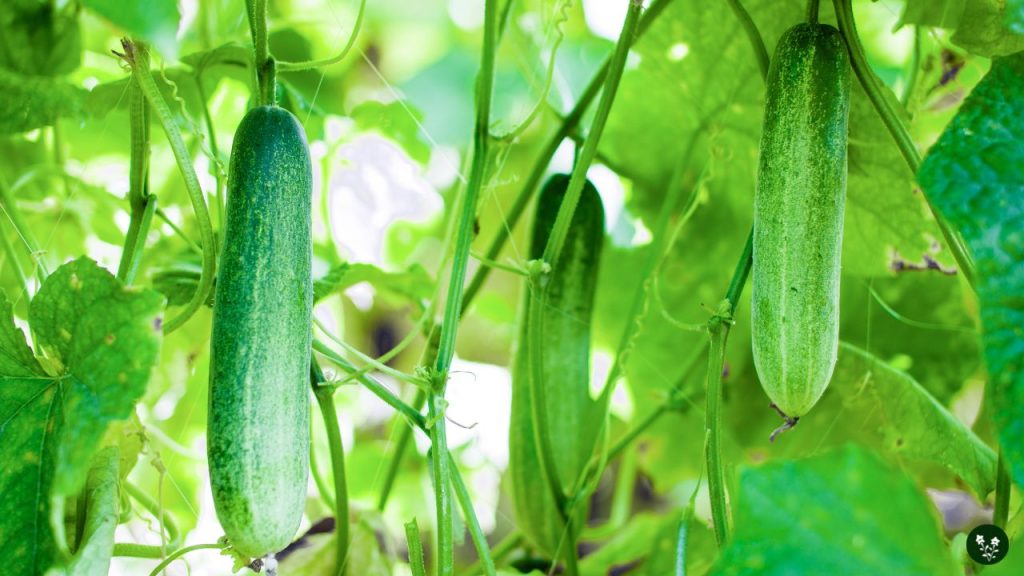
Before planting cucumbers, it’s important to prepare the soil properly to ensure the plants grow healthy and produce abundant fruit.
Here are some tips for preparing the soil:
- Choose a sunny location with well-draining soil. Cucumbers thrive in warm, sunny areas and need soil that drains well to prevent waterlogging and root rot.
- Test the soil pH. Cucumber plants prefer soil that is slightly acidic to neutral, with a pH between 6.0 and 7.0. You can test your soil with a pH meter or a soil testing kit, which can be purchased at most garden centers.
- Add organic matter. Good soil will have plenty of organic matter, such as compost. Adding compost to the soil will help get your cucumbers off to a good start, and applying an organic fertilizer, such as manure, will help give the plants nutrients during growth.
Once you have chosen a suitable location and tested the soil, it’s time to prepare the soil for planting. Here’s how:
- Remove any rocks, sticks, or other debris from the soil.
- Loosen the soil to a depth of 6 to 8 inches (15 to 20 cm) with a garden fork or tiller. This will help the roots grow deeply and access nutrients and water more easily.
- Mix in any necessary amendments, such as compost or fertilizer, to improve the soil quality and add nutrients.
- Smooth the soil surface with a rake, removing any large clumps or debris.
By following these steps, you can create a healthy and fertile soil environment for your cucumber plants to thrive in.
3. Planting Cucumber Seeds
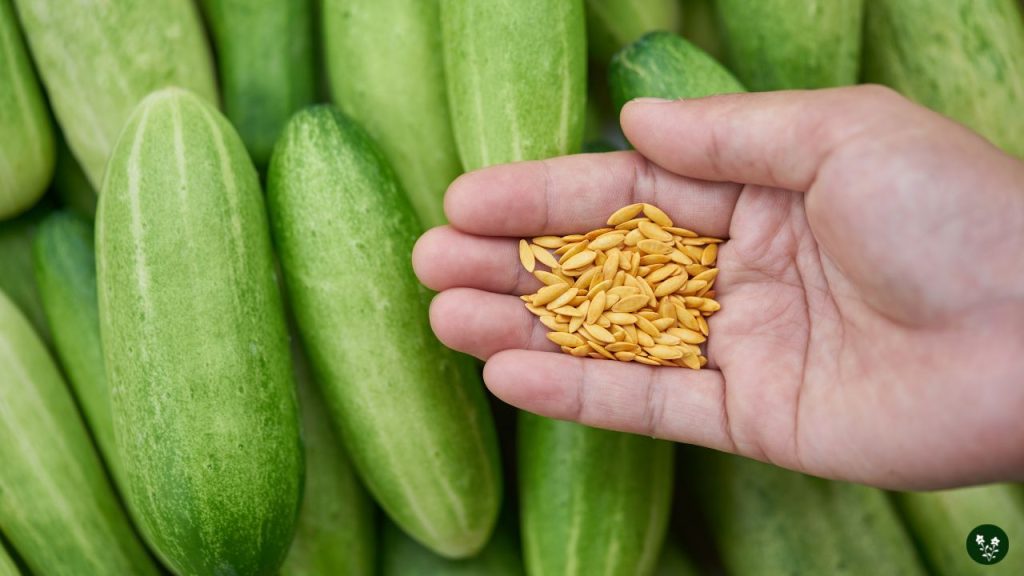
Indoor Sowing
If you want to get an early start on your cucumber crop, you can sow cucumber seeds indoors about 3 weeks before you plan to transplant them outside into the ground.
To do this, follow these steps:
- Choose plantable pots or seed trays to plant your cucumber seeds in.
- Fill the pots or trays with a good quality seed-starting mix.
- Plant the cucumber seeds about 1 inch deep in the soil, and cover them with soil.
- Water the soil well, and keep it moist until the seeds germinate.
- Provide bottom heat of about 70ºF (21ºC) to help the seeds germinate faster.
- Once the seedlings have grown their second set of true leaves, you can transplant them outside into the ground.
Outdoor Sowing
If you prefer to sow your cucumber seeds directly outside in the ground, you can do so after the soil has warmed up.
To do this, follow these steps:
- Choose a sunny location with well-draining soil to plant your cucumber seeds in.
- Prepare the soil by loosening it to a depth of at least 8 inches, and adding compost or fertilizer to it.
- Plant the cucumber seeds about 1 inch deep in the soil, and cover them with soil.
- Water the soil well, and keep it moist until the seeds germinate.
- Thin the seedlings to about 12 inches apart once they have grown their second set of true leaves.
Remember to water your cucumber plants regularly, and provide support for them to climb on if necessary.
With proper care, you can enjoy a bountiful cucumber harvest!
4. Caring for Cucumber Plants
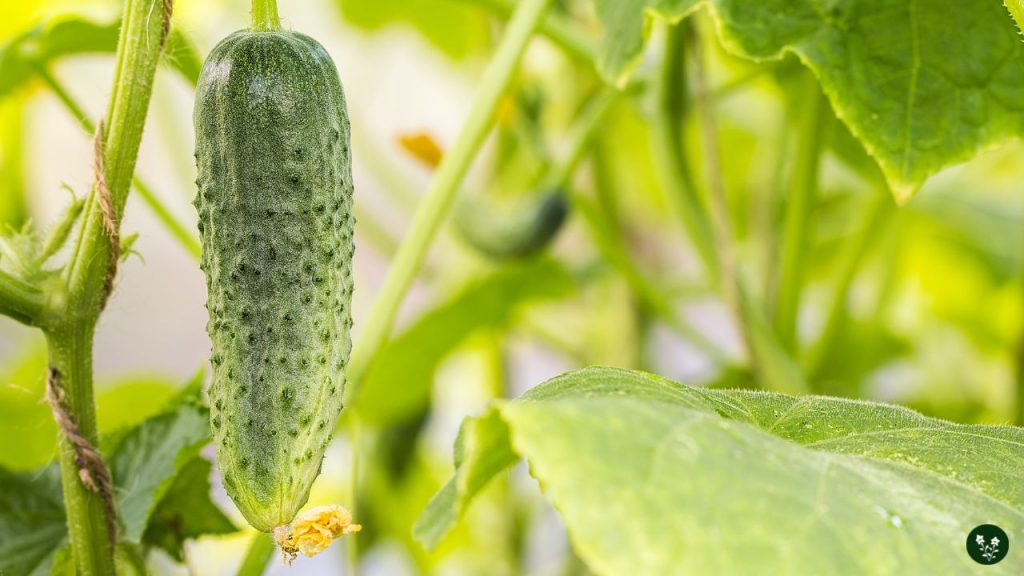
Watering
Cucumbers need a consistent supply of moisture to thrive, but they don’t like to be waterlogged.
Water deeply once or twice a week, or place plants on a drip irrigation system to ensure that the soil stays moist but not wet.
Use your finger to measure soil moisture; the top inch of soil should be dry before watering again. Avoid watering the leaves of the plants to reduce the risk of fungal disease.
Fertilizing
Feed your cucumber plants regularly to encourage healthy growth and high yields. Use a general liquid fertilizer every 10-14 days if your plants are in containers.
Once they start flowering, switch to a weekly tomato feed to promote fruit development. Be sure to follow the manufacturer’s instructions for application rates and timing.
Pruning
Cucumber plants can become unruly and take up a lot of space in the garden. To keep them under control, pinch off the growing tips of the vines once they reach the desired length.
This will encourage the plant to produce more side shoots, resulting in a bushier, more compact plant. Remove any yellow or damaged leaves as they appear to prevent the spread of disease.
Mulching
Mulching around your cucumber plants can help to retain soil moisture, suppress weeds, and regulate soil temperature.
Apply a layer of organic mulch, such as straw or shredded leaves, around the base of the plants, taking care not to cover the stems. Mulch should be about 2-3 inches deep.
5. Pest and Disease Control
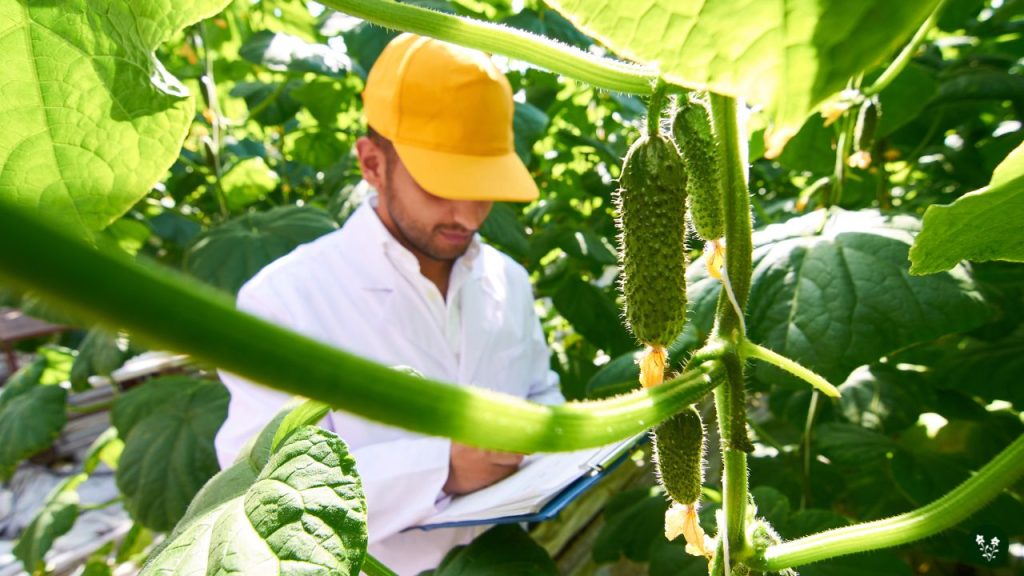
Common Pests
Cucumbers are susceptible to several pests that can cause significant damage to the plants. Some of the most common pests include:
- Aphids: These small, soft-bodied insects can be found on the undersides of leaves and can cause stunted growth and yellowing of leaves. Use insecticidal soap or neem oil to control them.
- Cucumber Beetles: These beetles can cause wilting and death of plants. Use row covers or insecticides to control them.
- Spider Mites: These tiny pests can cause yellowing of leaves and webbing on the undersides of leaves. Use insecticidal soap or neem oil to control them.
Common Diseases
Cucumbers are also susceptible to several diseases that can cause significant damage to the plants. Some of the most common diseases include:
| Disease | Symptoms | Control/Prevention |
|---|---|---|
| Powdery Mildew | White powdery coating on leaves | Plant resistant varieties, maintain good air circulation, use fungicides |
| Downy Mildew | Yellowing of leaves, white downy growth on undersides of leaves | Plant resistant varieties, maintain good air circulation, use fungicides |
| Anthracnose | Brown, sunken lesions on leaves and fruit | Plant resistant varieties, maintain good air circulation, use fungicides |
It’s important to monitor your cucumber plants regularly for signs of pests and diseases. Remove and destroy any infected plant debris and keep the field free from weeds.
Use disease-free seeds and grow available resistant varieties. Maintaining good air circulation and avoiding overcrowding can also help prevent the spread of diseases.
6. Harvesting Cucumbers
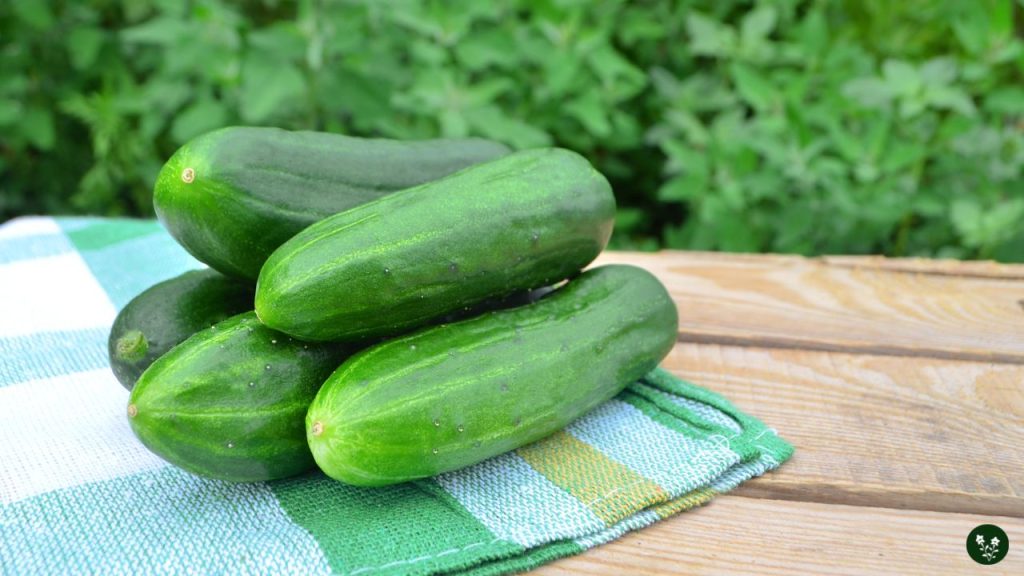
Cucumbers are ready for harvest in 50 to 70 days from planting, depending on the variety.
It is important to harvest cucumbers at the right time to ensure that they are sweet and delicious. Here are some tips for harvesting cucumbers:
- Harvest cucumbers when they are firm and have a bright green color. Overripe cucumbers will have a yellow color and a bitter taste.
- Check your plants daily for ripe cucumbers. They can grow very quickly, and you don’t want to miss the optimal harvesting time.
- Use a sharp knife or garden scissors to cut the cucumber from the vine. Do not pull or twist the cucumber, as this can damage the plant.
- Leave a small piece of stem attached to the cucumber. This will help the cucumber last longer in storage.
If you have an abundance of cucumbers, you may want to consider pickling them.
Pickling cucumbers should be harvested when they are small and firm, usually between 1 and 4 inches long.
These cucumbers are perfect for making pickles, as they have a crisp texture and a mild flavor.
Once you have harvested your cucumbers, it is important to store them properly. Cucumbers should be stored in a cool, dry place, such as the refrigerator.
They can be stored for up to a week, but it is best to use them as soon as possible for optimal flavor.
Conclusion
Growing cucumbers can be a fun and rewarding experience for any gardener, but it can also be a challenge.
With the right knowledge and preparation, however, anyone can successfully grow cucumbers at home.
It is important to choose the right variety of cucumber for your growing conditions and to provide them with the right soil, water, and nutrients.
Cucumbers require a lot of sunlight and warm temperatures, so it is important to plant them in a location that receives at least 6-8 hours of direct sunlight per day.
They also need a lot of water, so make sure to keep the soil moist but not waterlogged.
When it comes to pests and diseases, cucumbers can be susceptible to a number of different problems, including cucumber beetles, powdery mildew, and bacterial wilt.
To prevent these issues, it is important to practice good garden hygiene, such as removing any infected plants and keeping the garden area clean and free of debris.
Overall, growing cucumbers can be a fun and rewarding experience for any gardener.
With the right knowledge and preparation, you can enjoy a bountiful harvest of delicious, fresh cucumbers all summer long.